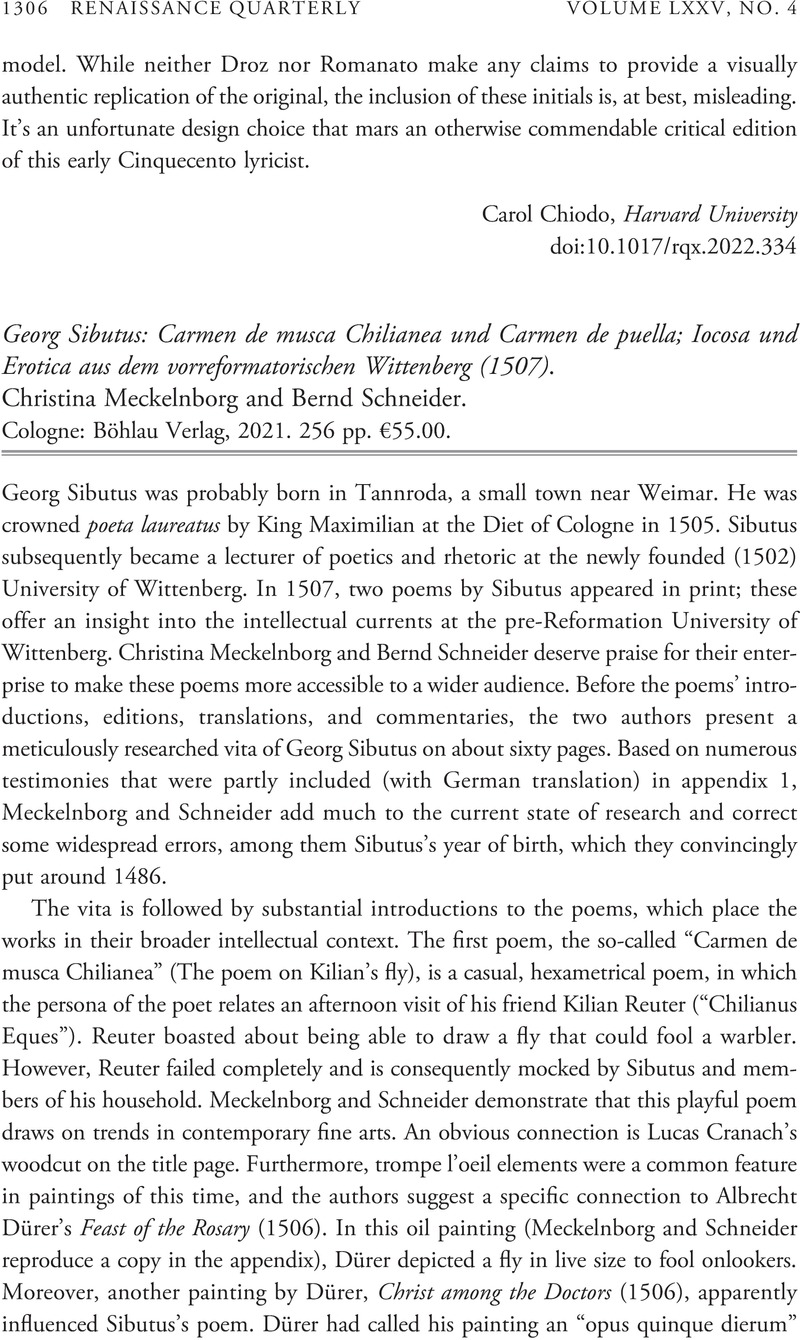No CrossRef data available.
Article contents
Georg Sibutus: Carmen de musca Chilianea und Carmen de puella; Iocosa und Erotica aus dem vorreformatorischen Wittenberg (1507). Christina Meckelnborg and Bernd Schneider. Cologne: Böhlau Verlag, 2021. 256 pp. €55.00.
Review products
Georg Sibutus: Carmen de musca Chilianea und Carmen de puella; Iocosa und Erotica aus dem vorreformatorischen Wittenberg (1507). Christina Meckelnborg and Bernd Schneider. Cologne: Böhlau Verlag, 2021. 256 pp. €55.00.
Published online by Cambridge University Press: 09 January 2023
Abstract
An abstract is not available for this content so a preview has been provided. Please use the Get access link above for information on how to access this content.

- Type
- Review
- Information
- Copyright
- Copyright © The Author(s), 2022. Published by the Renaissance Society of America



